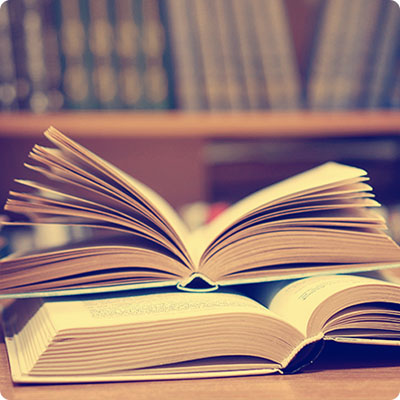The origins of tango
Tango originated in the seedy bistros on the banks of the Río de la Plata, where the black community, mostly deported from Bantu Africa, gathered in isolation in a city that dreamed only of Europe and modernity. However, their joyful, thundering music, derived from the candombes ("dance with drums" in Bantu languages), was soon to win over all the newcomers to immigration, who were also prey to loneliness and melancholy. Tango's history is shaped by the flux of musical influences (European waltzes and mazurkas, Cuban habanera, African candomblé...), which makes it impossible to pinpoint its exact origins. However, the genre was born at the end of the 19th century, when Argentina was seen as a promised land. African slaves, impoverished European immigrants and other dreamers lulled by the promise of the New World disembarked by the millions and crammed into conventillos, simple courtyards surrounded by multi-storey rooms, housing up to 500 people. In all the cabarets, people came in search of oblivion: all the uprooted people of Buenos Aires gathered to play cards, take refuge in the warmth of alcohol and reminisce melancholically about their life in the neighborhood. It was here that tango really took shape between 1860 and 1880. Originally, it was a purely instrumental genre: amateur musicians improvised ephemeral melodies to a simple key. The first formations were trios consisting of flute, violin and guitar.
At the end of the 19th century, the Germans arrived with their bandoneón, which soon became the emblem of tango. In these impoverished areas, the population was essentially male, with men repeating the dance steps amongst themselves and then practicing them with the girls in the brothels that flourished in the suburbs. Disapproved by "good" Argentine society, tango was considered "dirty" and forbidden in the upper echelons of society. Tango became a symbol of ethnic mixing and a veritable philosophy of life.
The codes of dance
An improvised dance, tango nonetheless follows a precise language and codes, suggesting that you need to be constantly attentive to your partner's every suggestion. Despite the different forms it has taken over the years, the basics are the same everywhere: the basic tango steps consist of walking in pairs and synchronizing. Traditionally, the man leads the dance and drives his partner, who must let herself go. The man guides the step, but the woman can influence the dance by slowing it down and adding embellishments. No directive guidance: the man proposes and the woman disposes. The other golden rule: dance with your whole body and your whole being! Latinos have a reputation for living and expressing things very intensely: let tango bear witness to this! More or less sensual, expressive, fluid or burlesque, tango is intimate and elegant. The invitation is made from a distance, by the man or the woman, but beware: never go out of your way to invite the person directly! To signal your intention, simply look at the person. If you agree, then the person nods... and only then can you move towards them. If consent isn't there, then the connection won't happen: the beauty of dance is governed by mutual desire, neither coerced nor forced.
Leaving to come back better
At the dawn of the 20th century, the sons and daughters of well-to-do families came to party with the migrants to the sound of this dance from the underworld. Some did business in Europe, slipping the first tango records into their trunks. Frowned upon in its own country, tango became all the rage in the French capital, where it earned its letters of nobility. Different styles of tango developed from Western Europe to Russia, via Finland. One of the first great successes was Angel Villoldo's El Choclo (The Corn Ear), which was even played on the German front in 1916! Rosendo Cayetano Mendizábal is responsible for another legendary composition, El Entrerriano (The Man from Entre Ríos). Tango entered the salons of Buenos Aires high society, where it became an emblem of the nation. The golden age of tango, during the Roaring Twenties, was marked by its singers, such as the inimitable Carlos Gardel. Salons and confiterías were packed, and major orchestras recorded record after record. D'Arienzo, Di Sarli, Pugliese, Troilo, D'Agostino... became stars whose hits are still danced at the milonga today.
Carlos Gardel, the greatest figure of tango - for which France, Uruguay and Argentina dispute authorship - made his debut in 1911, guitar in hand, in the bars of his neighborhood, Abasto. He became one of his country's most adored artists, and played a major role in the development of tango in Europe and the United States.
His golden age came to an end in the 1930s with his tragic death. As the musical genre waned, it underwent a revival in the 1950s with major artists such as Anibal Troilo and Edmundo Rivero, followed in 1960 by the nuevo tango, which embarked on a neglected path, that of a purely musical genre. Anibal Troilo, known as Pichuco, was one of the greatest bandoneonists of all time. Throughout his career, his charisma and human qualities made him a great rallying force for vocations and creations. In fact, his work lies at the confluence of danced tango, sung tango and instrumental tango. Often presented as a revolutionary tango, Astor Piazzola's work literally renovated tango with contributions from classical music and jazz. A bandoneonist of genius, he lived in New York during his childhood, where he met Gardel. Singer Roberto Goyeneche made his debut in Horacio Salgan's orchestra, and his voice took off in Troilo's troupe. He chose numerous collaborators from among the most prestigious artists of the day, and went on to build a highly admirable solo career. For the time being, he is remembered as the last of the great tango singers.
Today, tango is not just part of the glamorous clichés about the country; it can be learned and danced in the capital's milongas until the wee hours of the morning.
The revival
Having fallen into disuse during the dictatorship, tango is now back in vogue among the younger generation, after a new stint in Paris in the 1990s. Today, although tango is danced and sung a lot for tourists in search of porteño's glorious past, it remains a vigorous and popular art form. Some of today's young people slip their sneakers on the milonga floor, and the chords of the bandoneon still resonate. In 2009, tango was even included on UNESCO's list of the world's intangible cultural heritage. Artists such as Daniel Melingo and Adriana Varela continue to sing it, while other musical trends are appropriating it and giving it new life. This is true of electronic music, with groups such as Gotan Project, Narcotango, Tanghetto and Bajofondo Tango Club. It also seems that tango is moving with the times: calling the dance macho, women want to reclaim tango by breaking down stereotypes and guiding the dance. However, this egalitarian vision tends to outrage the most conservative, who rely solely on traditional forms. But tango continues to democratize and evolve with the times: in 2008, the first edition of the Buenos Aires queer tango festival brought together same-sex couples on the dance floor.
Experience the tango
It's impossible to come to Buenos Aires without seeing a tango show, whether in a theater or a milonga. For starters, take a stroll through the districts of Monserrat, Boedo, Almagro and San Telmo. It's in the latter that you'll find spectacular tango shows: Bar Sur and its timeless ambience promise an intimate show, while La Cumparsita stands out from the capital's crowded addresses. For a feast for the eyes and taste buds, head to Viejo Almacén, one of the city's must-see dinner shows! While tango shows are well worth the detour - whether in the legendary Café Tortoni or in the streets of San Telmo or La Boca - the soul of Argentine dance lives in the milongas, where all ages, styles and generations come together to dance. From the most traditional ball governed by ancient codes to the alternative evening of young people in sneakers, tango in Buenos Aires is the image of the city: passionate and colorful. It can be hard to find your way around all the offerings, so stick to the safe bet! For a relaxed atmosphere, head for Club Fulgor or La Mandrilera: a punk theater where rising stars Bruno Tombari and Rocio Lequio have founded a community of tangueros. For an even more festive atmosphere, opt for La Viruta, the temple of tango. Alternatively, head for La Catedral, an emblematic address thanks to its eclectic ambience and brocante decor. If, however, you're more inclined towards traditional addresses, take advantage of the Salón Canning 's live orchestra: dress code required. And for pure tango tradition, head for Los Zucca, Jueves de Cochabamba or the legendary Club Sunderland in the outlying Villa Urquiza district. Quality classes are offered at all good milongas, from beginners' first steps to seminars for advanced and professional dancers. Here, you can learn with gusto and good humor, and easily find partners to continue dancing during the ball. There are also numerous high-quality dance studios and academies. Las Malevas, El Motivo at Club Villa Malcolm and La Viruta promise classes of the highest standard. Finally, the indispensable Floreal Milonga is a fine example of elegant, historic tango in an unpretentious atmosphere. Finally, culture and history buffs won't hesitate to stroll through the San Telmo feria, in search of a vinyl or a picturesque painting, while others will head for the Museo Casa Carlos Gardel. This house, located in the heart of the Abasto district, was once home to the legendary singer and now pays tribute to his life and work. To find out more, visit https://hoy-milonga.com to find out all you need to know about tango-related activities.




















